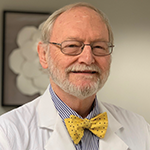
As shortages in rheumatology become more pronounced, the need to get more physicians into the field also increases. A report from 2007 indicated that there could be a deficit of more than 2,500 practicing rheumatologists by 2025.1
One way to generate interest is to make the most of each medical student’s rotation through the specialty. Exposure to the best facets of the specialty can lead otherwise undecided students into a career in rheumatology.
“Rheumatology as a field gets a relatively small percentage of those choosing careers in internal medicine,” says Richard Brasington, MD, professor of medicine and director of clinical rheumatology at Washington University School of Medicine in St. Louis. “Everybody we recruit counts and really helps. Rheumatology is not a field people are automatically drawn to. Many don’t know what it is, so I think it is very important that we present it to students in a way that is appealing.”
Positive Aspects Key
The key is playing up the positive aspects of the specialty during the time a student is being exposed to it. One of these is the challenge inherent in the practice of rheumatology.
“This is a specialty where the physician can bring a lot of expertise to bear on a focused group of diseases,” says David I. Daikh, MD, PhD, the Kenneth H. Fye Chair in Rheumatology at the University of California, San Francisco. “Many are uncommon or hard to figure out, which brings an intellectual challenge to the field that many students find compelling. For research-oriented students, there is still much work to be done on the causes and treatments of these diseases.”
Exposing students, residents and fellows to challenging patients is an important aspect that was a theme common to all the rheumatologists interviewed for this story.
Challenging Patients
“Early in the career of a student, they may see a really sick person in the ICU,” says Ernesto Gutierrez, MD, a physician in private practice in Lebanon, Pa. “Cardiology takes a crack, and then medicine comes in, and no one can figure out what is going on. The rheumatologist comes in and finally comes up with a diagnosis. It is very satisfying when you can take a case that has baffled others and figure it out.”

Dr. Brasington notes that this was a pivotal point when he was making his specialty decision during medical school.
“During my second year in medical school, I had a two-month rotation in medicine, and I don’t remember many of the patients,” he says. “I do remember a man with polyarticular gout and another sick with lupus. All the people with congestive heart failure or fevers did not make an impression on me, while the rheumatology-related presentations did.”
Critical Thought Required
This is also a field that requires quite a lot of critical thought and interpretation of physical exams and tests. Because there is often not a single test or procedure you can use to make the diagnosis, it is not one of the easier specialties to pursue, and practitioners have to be comfortable with a great deal of ambiguity.
